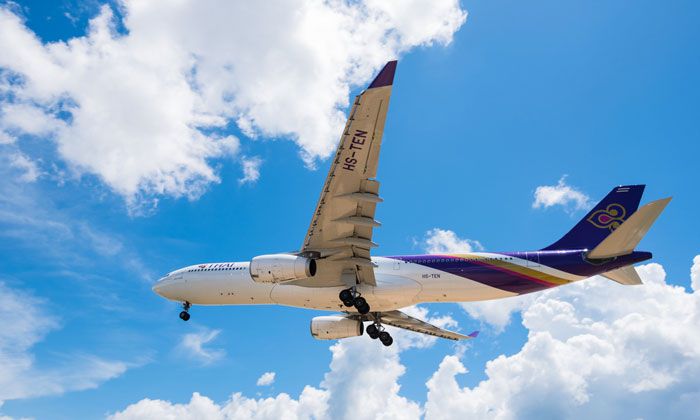Why The Weather Company can help airports streamline operations
- Like
- Digg
- Del
- Tumblr
- VKontakte
- Buffer
- Love This
- Odnoklassniki
- Meneame
- Blogger
- Amazon
- Yahoo Mail
- Gmail
- AOL
- Newsvine
- HackerNews
- Evernote
- MySpace
- Mail.ru
- Viadeo
- Line
- Comments
- Yummly
- SMS
- Viber
- Telegram
- Subscribe
- Skype
- Facebook Messenger
- Kakao
- LiveJournal
- Yammer
- Edgar
- Fintel
- Mix
- Instapaper
- Copy Link
Posted: 15 February 2017 | John Szatkowski | Director | Commercial Aviation | The Weather Company | IBM | No comments yet
It’s holiday season and both the temperature and traffic around any airport is overwhelming. How might airports streamline their operations when it matters?


It’s a tried and true story: Holiday passengers expect their flight to circle the runways as control towers work to organise the near-overwhelming number of planes landing and taking off from congested airports. This creates an intricate puzzle of flight times, diminishing windows of opportunity, and increasingly long lines for runways – not to mention the logistics of caring for the passengers onboard these planes, their relative comfort and travel plans, and their safety aboard planes with little to no leg room for error.
Added to the stress of the holiday season and potential weather delays inherent in all air travel, and you’ve got conditions ripe for angry social media posts from delayed customers, airport and flight crews struggling to make sense of changing schedules, and adapting to weather impact on operations under all conditions.
But what can be done to change this narrative to on-time flights, minimal headaches for airport and flight crews, and maximum efficiency to get passengers to their destinations with as little disruption as possible?
Marjorie Thompson, Associate Director of ground transportation with the Greater Toronto Airports Authority (GTAA), is no stranger to the complexity of altering flight schedules in response to adverse weather conditions.
Conditions ripe for angry social media posts from delayed customers, airport and flight crews struggling to make sense of changing schedules…
“Normal operations are very busy, and holiday travel, both summer and winter, create added levels of complexity with the highest passenger and flight volumes possible,” said Thompson.
“Travel plans can easily be disrupted by winter weather, and our goal is to move passengers and aircraft according to schedule. Predictive tools allow the airport authority and air carriers to dynamically manage traffic in adverse weather conditions and limit delays as much as possible to ensure a smooth flow of passengers through the terminals.”
WSI Fusion, the global flight operations management solution for commercial airlines from The Weather Company, an IBM Business, provides early insight into changing flight, airport, and airspace conditions, which offers a highly accurate glimpse into the future to better anticipate planning and staffing shifts. Fusion enables customers to optimise operations and mitigate the impacts of disruptive events – weather, outages, etc. – by fusing global public and proprietary weather information, airspace constraints, flight tracking information, and navigation data into a unified and clear operational picture to take the guesswork out of situational decisions.
According to Thompson, WSI Fusion has been critical in helping her and her crew plan for, operate within, and mitigate flight operations that require a deviation from the norm.
“I first acquired Fusion to assist with diversion monitoring in IROPS [irregular operations]. This tool allows us to plan for extended hours of operation and ensure services such a customs, pre-board screening, concessions, and janitorial are available to deal with operations that extend beyond normal planned hours.”
Fusion’s intelligent alerting engine continuously monitors conditions to notify operations personnel of potential problems and possible actions to avoid further delays. This ability to manage by exception and receive advanced warning significantly improves operational flexibility and safety, allowing your crews to more quickly acclimatise to changing conditions literally on the fly.
“Once the system was acquired we quickly became aware of its other features,” said Thompson. “Air carriers that only fly once a day or less may not always have a presence at the airport prior to scheduled arrival and therefore can delay ETA information that impacts gating. Gate planning has found the accuracy of ETA’s beneficial for gate allocation.
[Fusion’s] weather package is extremely detailed, predicted hourly precipitation rates and visibility allow us to anticipate extended taxi times and other factors to OTP. The email alerting system for diversion allows the ‘day of’ operations teams real-time information when they are in the field and do not have access to a computer.
“Post event information such as diversion reports and airborne holding allow us to summarise impact in reports and assess opportunities for operational improvements in future events. This has also been a valuable tool for training operational staff on weather, ATC information, operational impact in weather events and high demand days were runway capacity is critical.”
Designed to integrate seamlessly with existing AOC systems such as flight planning, messaging, and other proprietary data sources, Fusion enables operators to quickly resolve problems and communicate relevant information to an aircraft’s crew. Fusion helps dispatchers, operations personnel, and managers stay aware and ahead of changing conditions, mitigate the impact of disruptive events, and ultimately improve safety, situational awareness, fuel planning, productivity, and operational performance.
According to Thompson, “As the saying goes: ‘Forewarned is forearmed.’ Having as much information on flights, weather, and unexpected diversions allows the airport time to plan and adequately deploy resources at critical times to ensure peak operational performance during a period when delays will heavily impact air carriers and hamper recovery.”
WSI Fusion not only aims to do this, but also offers airlines increased benefits to make more confident business decision in the moment with the best forecast data available.
Other aviation products offered by The Weather Company to ensure smooth flights and maximised efficiency include the following:
- Global Flight Tracking allows airlines to monitor flight traffic through a new FAA high-quality, system-wide information management data feed for U.S. and U.K. flights. It provides airport surface tracking reports that include aircraft position and movement data. These reports enable operations teams to monitor taxi times, runway congestion and gate traffic. Fusion supports the integration of ACARS and other position sources and can project flight position in areas where actual position reports may be unavailable. And, with global surveillance and the incorporation of EUROCONTROL electronic flight data for European flights, airlines can make the jump to international flight monitoring with ease.
- Global Weather Content displays operationally required content including winds aloft, temperatures, SIGMETs and AIRMETs for preflight analysis and incorporates premium Enroute Hazards and terminal area forecast services issued by The Weather Company’s Global Forecast Centre. The product also depicts convective activity worldwide with The Weather Company’s proprietary real-time Global Lightning Network and SATrad for areas where radar may be lacking and provides early insight into operational restrictions with proprietary Forecast Precipitation.
- Disruption Management Insight highlight operational irregularities such as route deviations and diversions and features proprietary flow pattern recognition for early detection of airborne holding. The product monitors FAA temporary flight restrictions, flow constrained and evaluation areas, airspace flow programs, and airport traffic management initiatives and can provides predictive airport analytics for congestion, taxi times and runway configurations.














